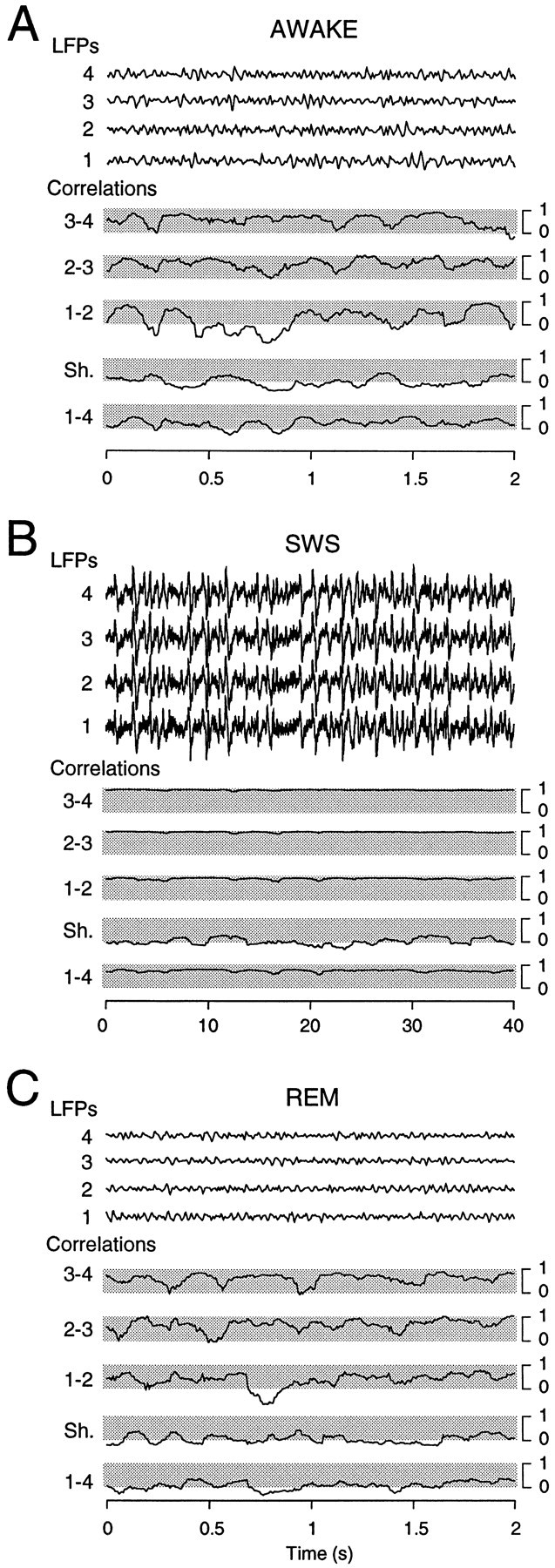Fig. 3.

Fast oscillations are coherent locally in space and time. LFP recordings in the suprasylvian gyrus (LFPs; locations similar to that of electrodes 1–4 in Fig. 1, with a 1 mm interelectrode distance) are shown together with the maximal cross-correlation (Correlations) calculated between pairs of electrodes (1–2, 2–3, 3–4, and 1–4 pairs)Sh., The control correlation obtained between electrode 1 and the same signal taken 20 sec later. A, Fast oscillations during wake periods. Neighboring electrodes were occasionally synchronized, as shown by correlations close to 1, but only for short periods of time (100–500 msec). B, Period of slow-wave sleep with the number of oscillation cycles similar to that in A (note the difference in the time scale). In this case, correlations between neighboring electrodes stayed close to unity, and the synchrony extended the entire recorded area.C, Period of REM sleep. Fast oscillations had a dynamics similar to that in A, consisting in brief periods of synchrony between neighboring electrodes, occurring irregularly and within short time windows. Correlations were calculated in successive time windows of 100 msec for A and C and 2 sec for B.
